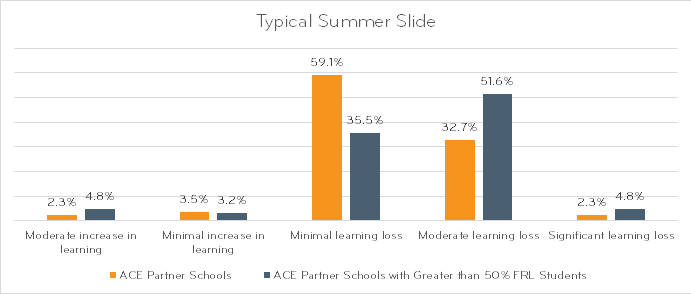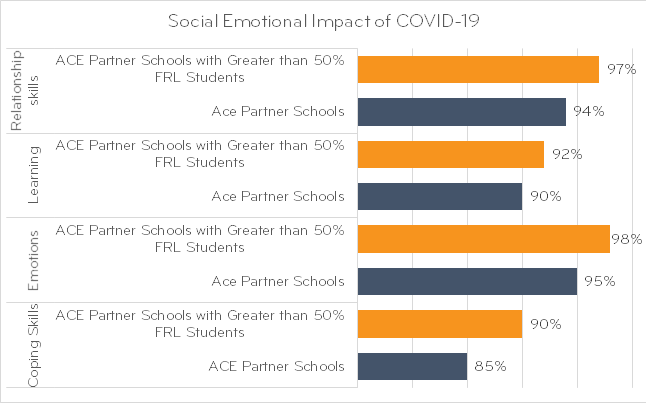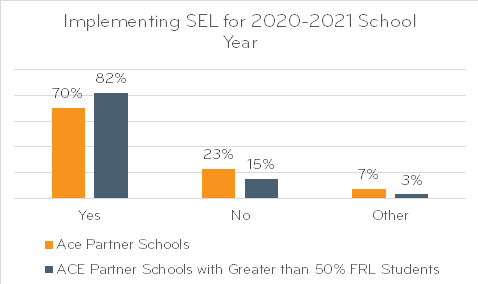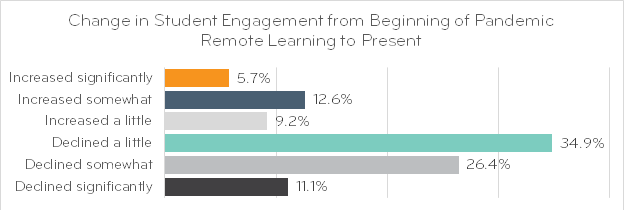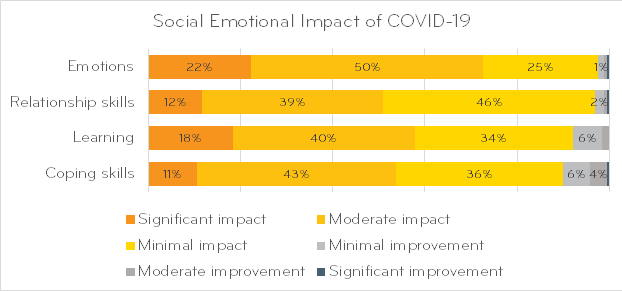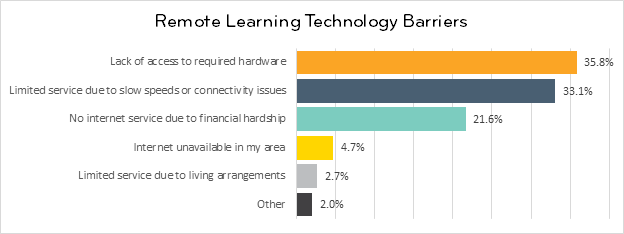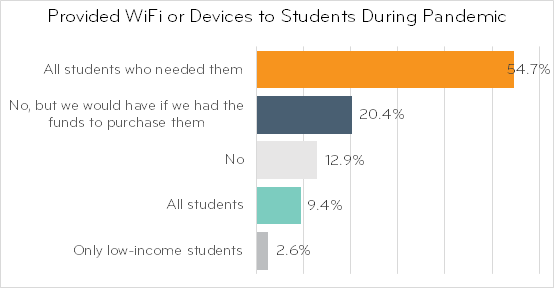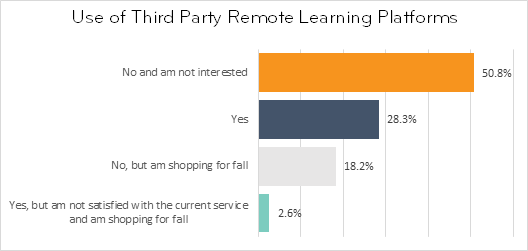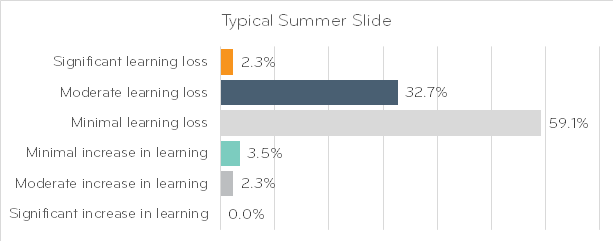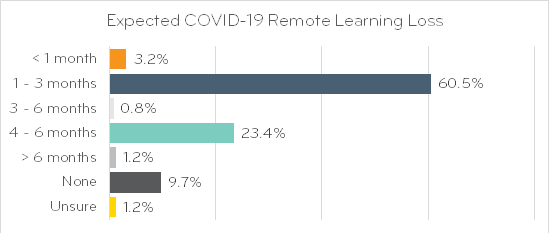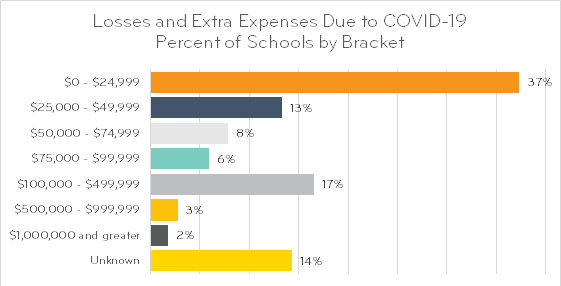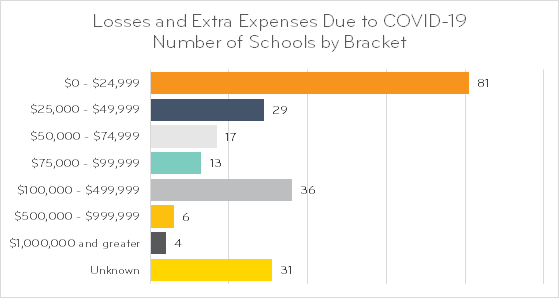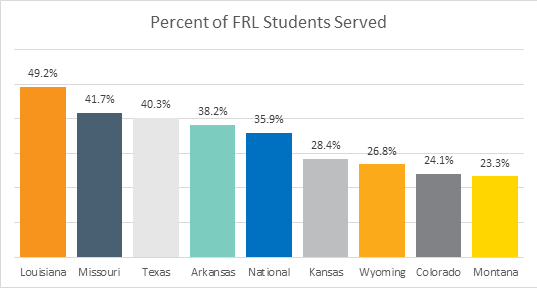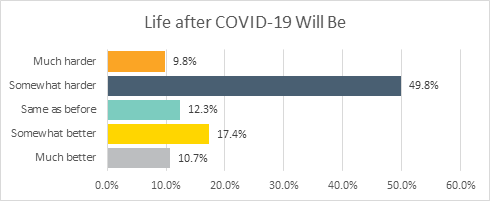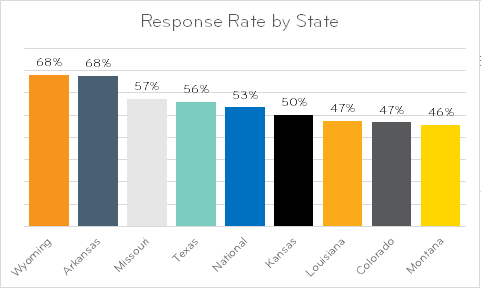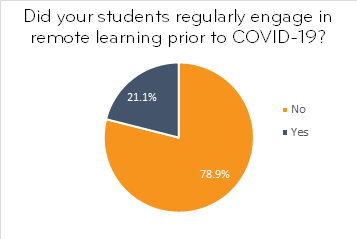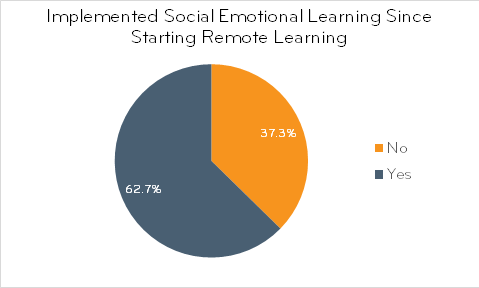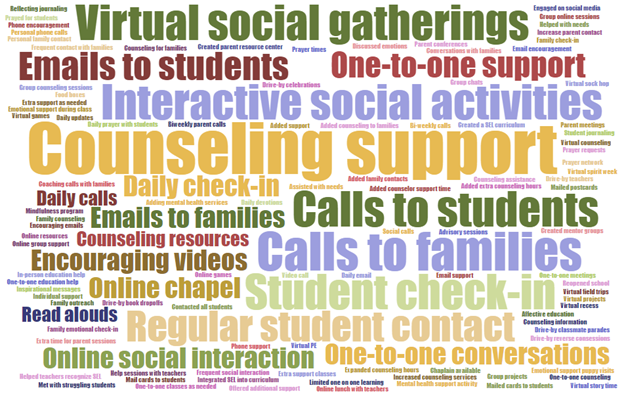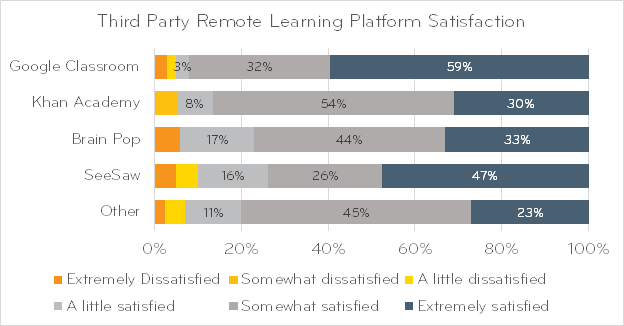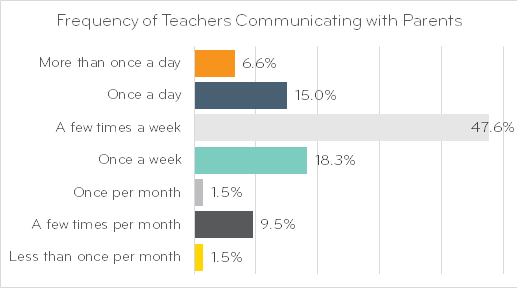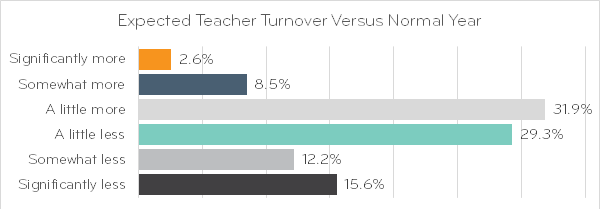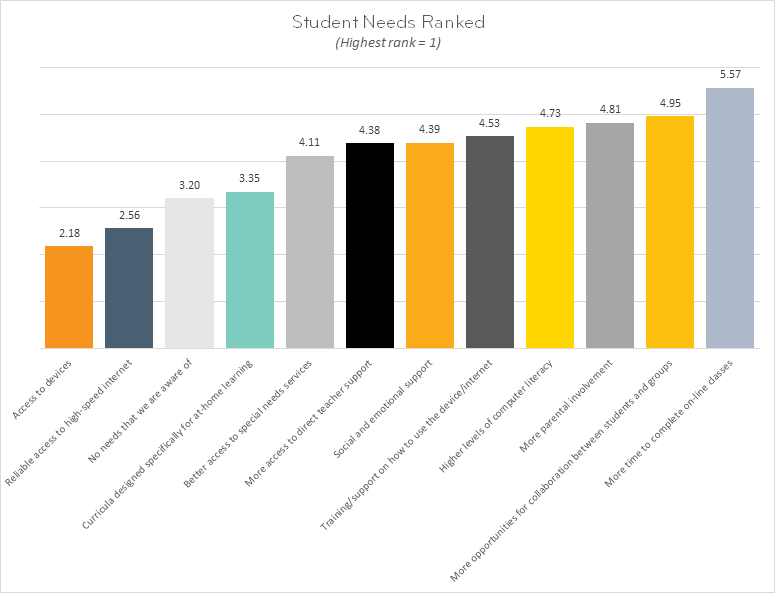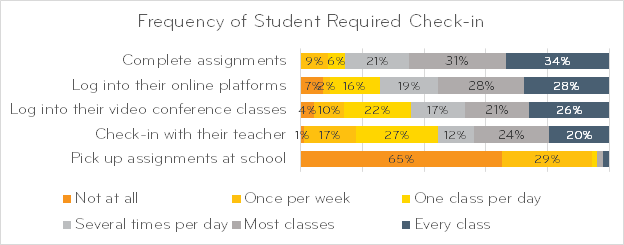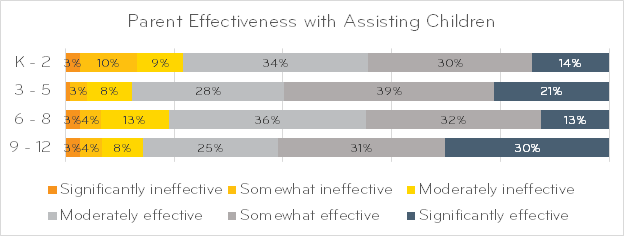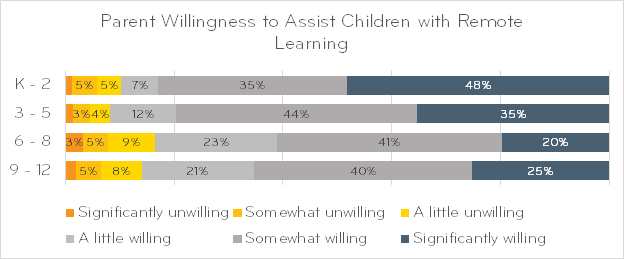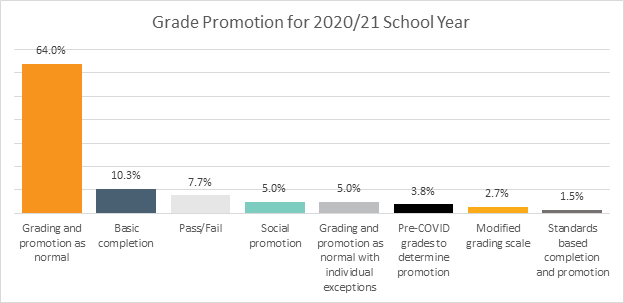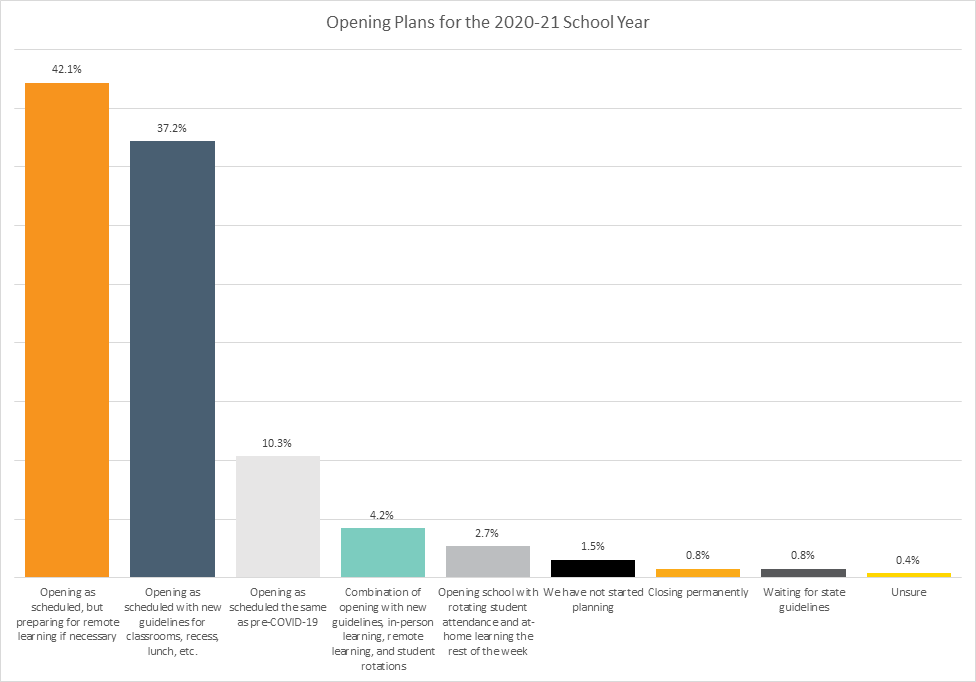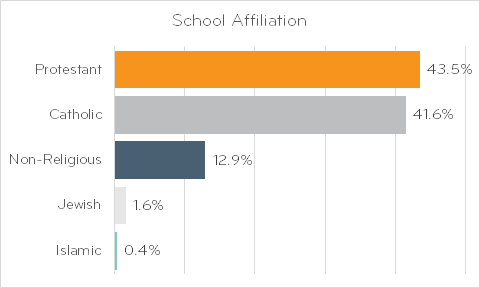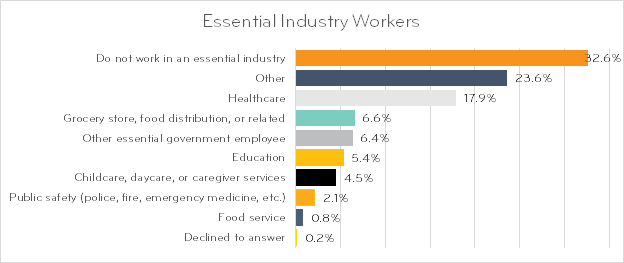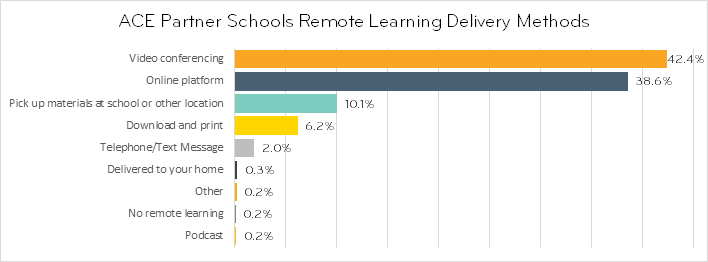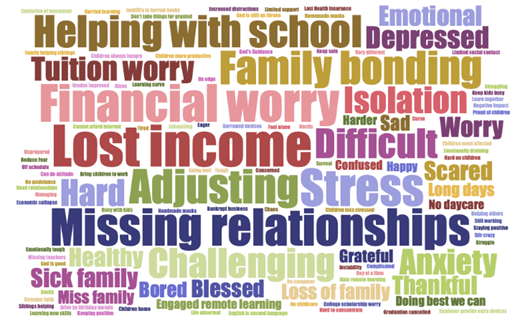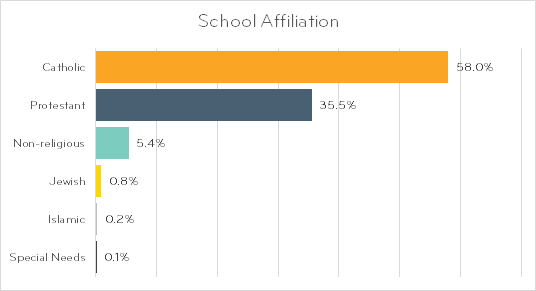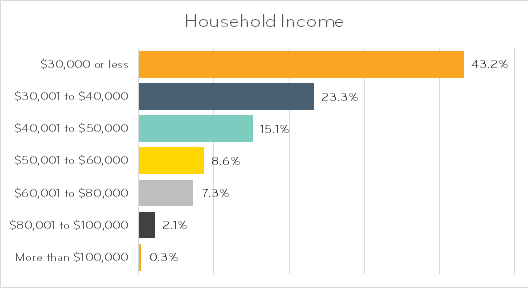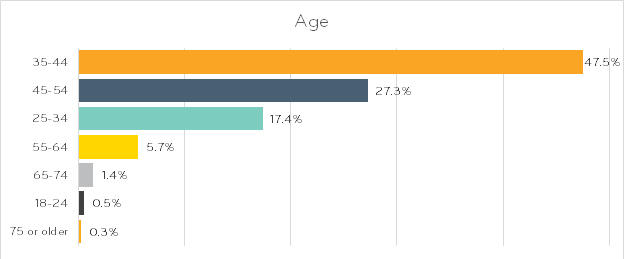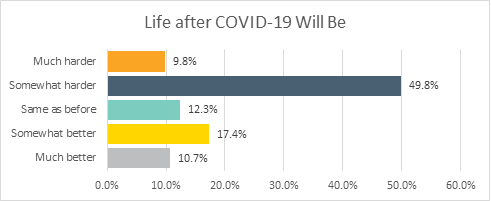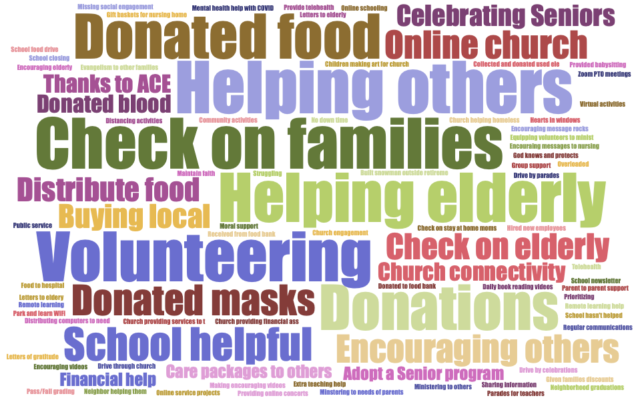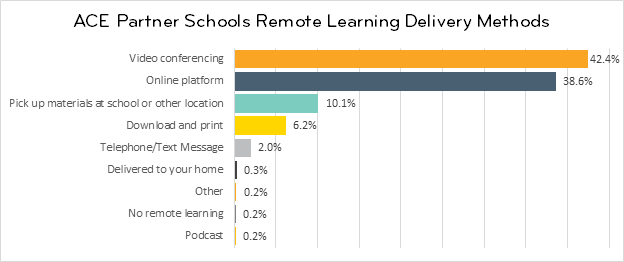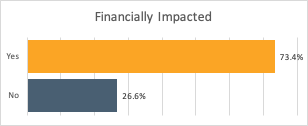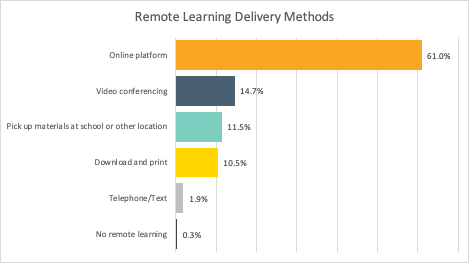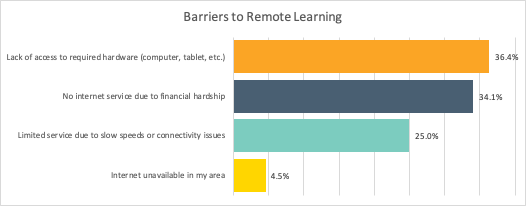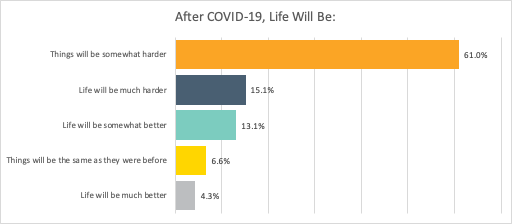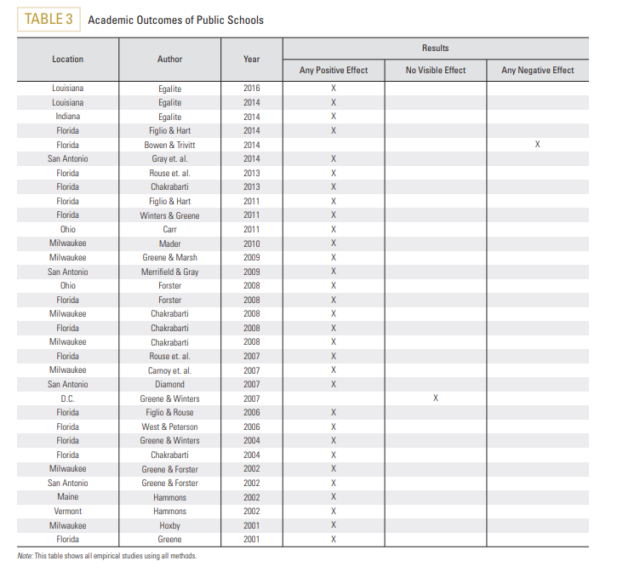As COVID-19 ramped up, schools were closed, parents were being laid off or having hours greatly reduced. This created turmoil within the education system and even more disruption for student and parent routines. The education system was wholly unprepared for this new reality.
Schools were forced to switch to remote learning in a matter of days. Survey data show schools of different types addressed remote learning and how they served student populations differently.
Remote Learning
Many feared remote learning would focus on just reviewing past material instead of being more rigorous with the continued introduction of new content. Traditional public-school parents spent 72 percent of their time introducing new content and 26 percent reviewing past content. Charter school parents however, introduced new content 86 percent of the time and 13 percent reviewing past content. Private school parents spent 88 percent of their time on new content and only 10 percent on past content.
When you review this data by income, there is a dramatic gap between the top quartile and bottom quartile. The bottom quartile received new content 64 percent of the time as compared to 80 percent for the top quartile. The bottom quartile spent 14 percentage points more time reviewing past content.
Instruction Activity
Thirty-one percent of the parents surveyed, reported whole class meetings, assignments, and feedback with teachers happened less frequently than once per week if at all. Nineteen percent reported no whole class meetings at all. One-on-one meetings were reported as even less frequent with 40 percent reporting zero and 22 percent reporting less than once per week.
Teacher Contact
Parents were not satisfied with the intensity of remote instruction. This was reflected in the low satisfaction rate of parents. Only 22 percent of parents were satisfied with less whole-class meetings didn’t occur more than once per week, one-on-one meeting satisfaction was 24 percent, required assignment satisfaction was 20 percent, and feedback and grade satisfaction were 21 percent.
Due to the remote learning ACE partner school teachers are spending more time on activities other than learning in the new online reality. Teachers report 96 percent time managing technology, 88 percent more time preparing their online lesson plans, and 88 assisting parents with the remote learning technology.
Learning Loss
Seventy-two percent of parents in traditional public schools reported that their children learned less at home than if their school had remained open, while only 54 percent of charter school parents and 67 percent of private school parents reported the same. Interestingly, 77 percent of white parents reported they believed their children learned less remotely, with Hispanic parents reporting 61 percent and black parents at 53 percent. The top quartile parents reported in at 74 percent, while the bottom quartile reported in at 57 percent.
ACE partner schools estimated the median COVID slide learning loss to be 2.5 months and recovery to take nearly 3 months. Some school feared it would take an entire school year to recover what was lost. The loss and recovery for low-income students was an extra half a month more than students in general.
Parental Satisfaction
It comes as no surprise parents were not satisfied with how schools shifted to remote learning. The top and bottom income quartiles ranked their satisfaction at 26 and 29 percent respectively. The one brighter spot was charter school parents raking satisfaction at 45 percent, and private school parents at 39 percent. Only one in four (26 percent) parents at traditional public schools were satisfied.
Some of this low parent satisfaction could be attributed to the frequency of schools communicating with parents. Ninety-nine percent of private schools reported communicating with parents at least once per week with 55 percent of those reporting multiple contacts per week, 16 percent daily contact, and 14 percent making multiple contacts per day.
Parental dissatisfaction of remote learning appears to be one of the reasons many parents did not return their children to school this fall. Parents are choosing from a myriad of options. Many private school students are returning to public school due to financial issues, some public school students are moving to private schools due to them returning to in person learning, others are opting to homeschool, or find a micro-school (a specialized school within a school). Instead, some opted to start pandemic pods. Pandemic pods are families and neighbors joining together to teach, or hire a teacher for, their children in small groups at each other’s homes.
Student Engagement
ACE partner schools reported a decline in student engagement of 72 percent as the remote learning continued. A significant decline was reported of one in ten students. This disengagement appears to have continued into the fall with schools reporting an increase in failure rates. In Brazosport, TX students back in class have a “failure rate of 8 percent,” while 25 percent of virtual students are failing at least two classes. An Austin, TX middle school was seeing and almost 25 percent failure rate of at least one class. Across Austin ISD the failure rate has increased by 70 percent and the Hays CISD reported a 30 percent in student failures. Hondo, TX reports a 63 percent failure rate.
This failure rate is not just happening in Texas. It is happening in other states as well. Districts in the San Francisco Bay Area are reporting 30 to 50 percent increases in their failure rates. Los Angeles is seeing a surge in Ds and Fs.
The Solution
There is a simple solution to enable the problems created by the pandemic to be solved. That solution is individualized education funding which would allow every parent to find and select the education that best works for their child. This individualization would allow parents to find a school with in-person learning (public, private, or charter), finding a remote learning solution that fits their child’s needs (public, private, charter, or third party), home schooling, pandemic pods (families joining together to teach their children), micro-schools (small schools within a school), or any other education model.


